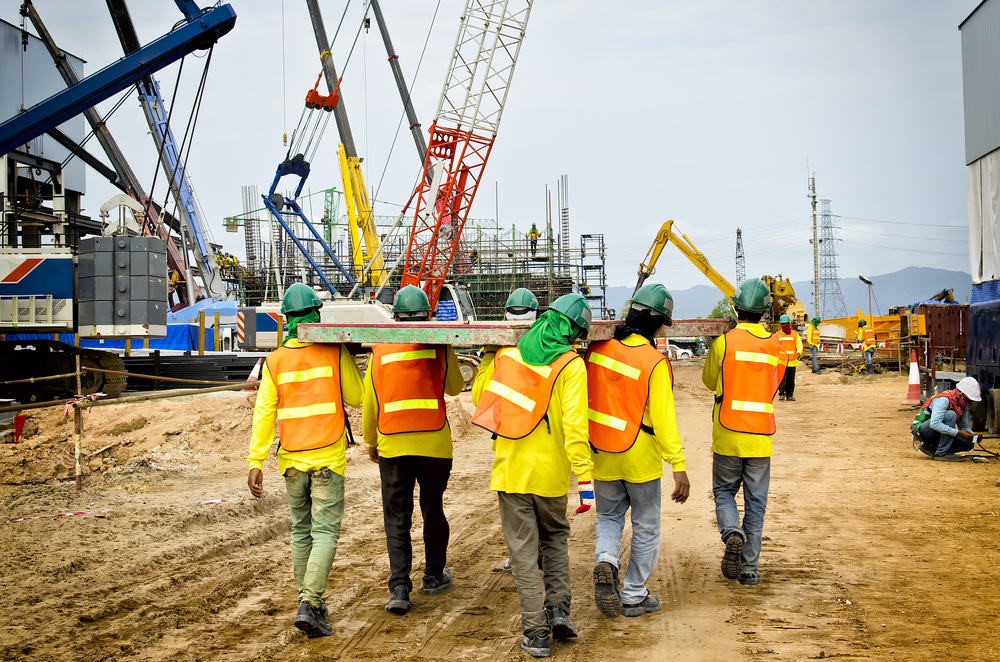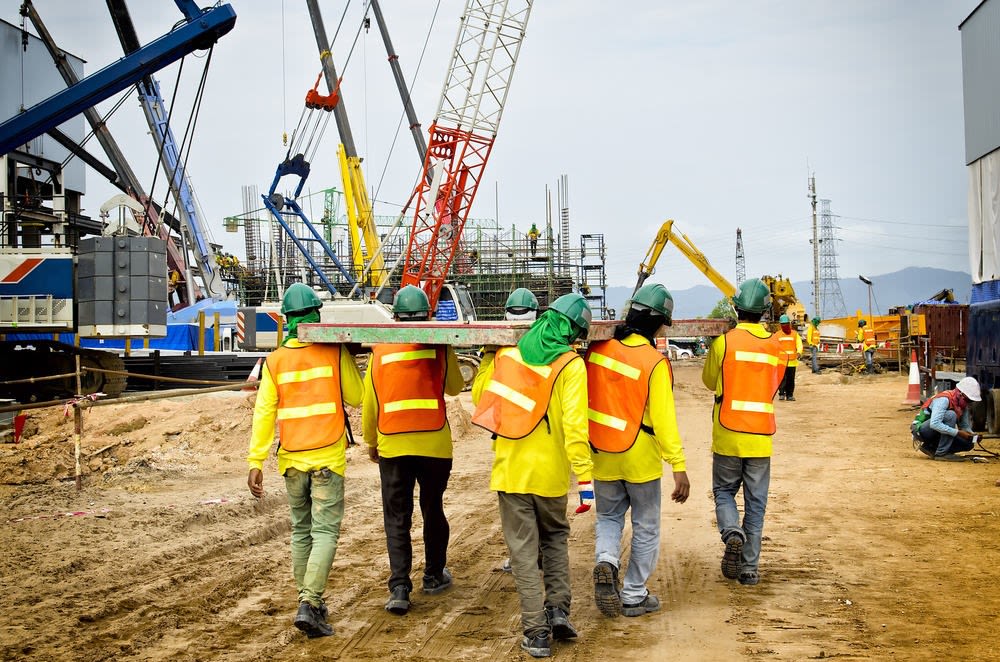Learn more about managing a safe affordable housing construction project in Nairobi, Kenya and beyond.
Construction work can sometimes be hazardous. From conditions such as working with noise, high height, dust, power tools, excavating, and so on, fatalities can occur in a construction site if proper measures are not put in place. Being struck by an object, falling, electrocution and being stuck in between two objects are some of the significant fatalities that can befall anyone in such an environment.
 Image: ohsonline.com
Image: ohsonline.com
Be it a simple fall, exposure problems or even a mechanical malfunction, a strong-minded Safety Management System (SMS) can go a long way to preventing occupational hazards and accidents. An effective SMS goes beyond the “Do not touch this, do this, don’t do that” approach.
A long time ago, when contractors and managers were still using notepads and rules, even before the Construction Management Software debut, early safety systems were already in place. Based on the regulations of the period, they were commonly referred to as “one size to fit all.” Inspectors employed by the government checked that companies adhered to the laid legislation.
Fast forward: When calculators entered the industry, there was a fundamental change. Instead of the government doing checks, companies began to access their health and safety measures. They developed a kind of SMS that showed they were concerned with the worker’s safety throughout their workdays. By the time these gadgets morphed to PCs, a lot of construction companies had shifted to adopt their own SMS.
Well, there are at least three reasons why any construction company would want to adopt its own SMS
- Cost-effectiveness: Effort, money and time spent on coming up with preventive measures are less expensive compared to dealing with accidents after they occur.
- Moral Responsibility: No firm should employ people to work at risk.
- Regulations: Every country has some laid legislations that promote secure working environments.
Implementing the right SMS in your firm can relatively be challenging. While other sectors such as air travel have SMS solutions at their disposal, finding suitable basis for safety as a construction firm involves a lot of digging.
What should a suitable SMS include?
Essentially, a SMS is a systematic method of identifying any possible hazards and managing all the risks relating to a specified work place.
A good SMS should include the company’s procedures, policies, organizational deployment, systems, and also accountabilities for ascertaining that all the necessary precautions are maintained. Moreover, a SMS should be part of a company’s culture so that everyone adhered to it.
A proper formulated SMS will include the following:
-
Identification of all the hazards: All the perils relating to activities within specified workplaces are listed and assessed.
-
Risk management measures: Entails the procedures that should be taken to keep the risks of the mentioned hazards down to even zero or acceptable values.
-
Monitoring: A regular assessment must be done to ascertain whether the SMS is being adhered to.
-
Continued Improvement: A good SMS will leave room for enhancement so that its effectiveness can be significantly improved.
The above items are generally in a PDCA (Plan, Do, Check, Act) cycle.
- Plan: A hazard is identified, and safety procedures defined.
- Do: The procedures are applied
- Check: The relevance, effectiveness, efficiency, and completeness of the measures are ascertained.
- Act: Remedies are taken to improve the SMS. This leads back to step one so that the cycle can restart again.
At Hao Finder, we value the role a Safety Management System plays in any construction project. We also comprehend that it is a method rather than a product. A firm adopting a decent SMS enjoys improved productivity, quality of work, job satisfaction and employee morale not to mention reduced absenteeism, accidents, errors, injuries and loss of life.


